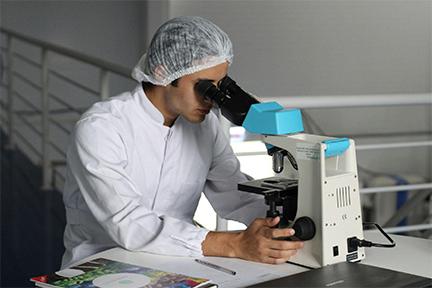
Stem cell therapy can be seen as an effective treatment for multiple sclerosis (MS), which is an autoimmune disease that affects the central nervous system. 200 people are diagnosed with MS each week in the United States. The more people are diagnosed with this disease. The more fake information emerges that only adds to the population’s confusion regarding the safety of this therapy, stem cell sources, and who is allowed the therapy.
Patients of stem cell therapy should be aware of how this therapy works in order to make a sound decision. This article will help to clear misunderstandings and realities concerning stem cell therapy for MS.
Myth #1: Stem Cell Therapy is a Miracle Cure for MS
Stem cell therapy has been found to help relieve some of the symptoms of multiple sclerosis, including the following:
- Blurred vision
- Muscle weakness
- Fatigue
- Poor coordination
- Cognitive difficulties
Although treatment can halt the development of the disease, it is not a cure for the condition. Multiple sclerosis stem cell therapy can contribute to fewer relapses, enhance the neurological condition and reduce inflammation within the central nervous system (CNS), but it does not treat the disease.
Myth #2: Stem Cell Therapy for MS is Unsafe
Like any medical procedure, stem cell therapy has its own set of risks. One of the typical approaches to stem cell therapy treatment is hematopoietic stem cell transplantation (HSCT), which utilizes the patient’s own stem cells. Infusion of stem cells after high-dose chemotherapy can cause immunosuppression; therefore, the procedure allows the patient’s immune system to be suppressed by the chemotherapy.
Published research suggests that HSCT is feasible in MS patients, though most of the studies have involved the treatment of patients with active, relapsing-remitting multiple sclerosis. Patients must get the procedure from accredited hospitals and work with competent personnel in order to reduce the possibility of risks.
Myth #3: Stem Cell Therapy is Only for Severe Cases of MS
Stem cell therapy does not only apply to those who are severely affected by MS or those who relapsed at a later stage. Science indicates that patients with relapsing-remitting multiple sclerosis (RRMS) who had low success rates with conventional disease-modifying drugs could be potential candidates for the therapy.
Stem cell treatment is yet another option for patients with progressive subtypes; however, the benefit can be witnessed more in RRMS patients.
Myth #4: Stem Cell Therapy is a One-Time Solution
Stem cell therapy cannot necessarily be a single process that requires a one-time fix and does not come with any strings attached. Although some patients can have positive outcomes, some symptoms may re-emerge. Sometimes, patients will require other forms of treatment or follow-up therapies in order to sustain the outcomes received from stem cell therapy.
These interventions, however, should be followed closely in order to monitor and manage the disease well. It is for this reason that patients should understand stem cell treatment as a measure of treating their conditions rather than having a permanent cure.
Myth #5: All Stem Cell Therapies Are the Same
Many stem cell therapies differ and there are many methods that can be utilized in treating individuals with multiple sclerosis by using stem cells. There are two well-known types of stem cells, namely; the hematopoietic stem cell and the mesenchymal stem cell. Autologous hematopoietic stem cell transplantation (aHSCT) therapies are based on HSCs work to adaptively correct the immune system by using the patient’s own blood or bone marrow stem cells.
Mesenchymal stem cells (MSCs), on the other hand, are acquired from body tissues such as bone marrow or adipose tissue – they aim at decreasing inflammation and stimulating tissue remodeling.
 Myth #6: Stem Cell Therapy for MS Isn’t Supported by Science
Myth #6: Stem Cell Therapy for MS Isn’t Supported by Science
It is worth noting that stem cell therapy has received a lot of support from several scientific studies, although the positive result of stem cell therapy for MS has not been determined due to a lack of long-term results. Research, including the MIST trial, which included the use of aHSCT in volunteer patients with RRMS, proved that the method could help significantly lessen disease activity. Earlier investigations have also shown that MSCs exhibited anti-inflammatory responses and thus have the capability to support neuronal regeneration.
Some countries consider stem cell therapy experimental, which can create misunderstandings and lead to the idea that this method is unproven. However, the work continues, and each year, fresh data is revealed. For this reason, stem cell therapy is an increasingly popular option for many patients.
Myth #7: Stem Cell Therapy is Too Expensive and Inaccessible
The cost of stem cell therapy depends on the type of treatment, the place, and the degree of the necessary treatment. This often means that the clinical trial of the product can make it possible for patients to have access to stem cell therapy at a cheaper price or for free.
Some insurers also accept the cost of stem cell therapy for MS, especially in cases when this form of treatment is necessary and other therapies for MS have not been effective. Patients should consider various possibilities, such as trials and the establishments that provide financial support or credit.
Final Thoughts
Stem cell therapy for multiple sclerosis is one of the thrusts of treatment that clients who have the disease may use, but speculation should not get ahead of reality. Although potential costs can be a hindrance, efforts to widen the availability of stem cell therapy and the options for affording it continue to make it even more possible.
